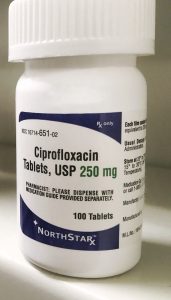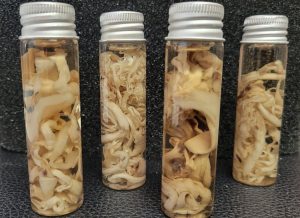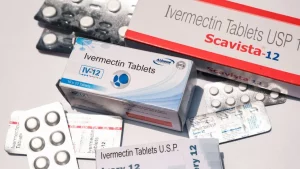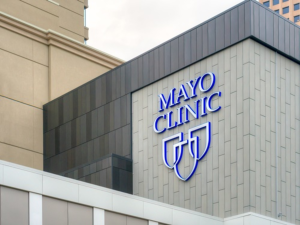Category Archives: Medical information and Research Data
Kennedy VP….and statistics for children on vaccine harm
Fluoroquinolone antibiotic….DON’T DO IT!!!
 An antibiotic given, for example, for a urinary infection.
An antibiotic given, for example, for a urinary infection.
Those suffering from fluoroquinolone toxicity are colloquially known as having been “Floxed.” They experience a spectrum of debilitating conditions, including tendon ruptures and severe neurological and psychological effects, often leading to irreversible impairments.
Fluoride’s Fallout: How Fluoroquinolones Damage Mitochondria
Many patients with severe side effects from fluoroquinolones encounter skepticism from health care professionals, who regularly dismiss any correlation between the medication and patient symptoms.
Dr.Rogers, MD: Fenbendazole and Cancer
Dr. David Martin: Speech to the EU Parliament on the proof of racketeering WHO
Dr. David Martin gives a speech to the EU parliament concerning the WHO from Keith Coley on Vimeo.
If anyone is in touch with Tucker Carlson…he must interview Dr.David Martin
Embalmers find rubbery blood clots in vaccine injected autopsies
In a recent survey of 269 embalmers across four major countries and three continents, more than 70% reported finding strange fibrous white blood clots in significant percentages of corpses in 2023 — clots they were not finding pre-pandemic.
A similar survey conducted in late 2022 revealed that 66% of embalmers began finding the unusual clots in mid-2021, suggesting a temporal link to the rollout of COVID-19 vaccines, which began earlier that year. READ MORE…
Methylene Blue
Miracle Drug (Ivermectin)…the True Story of Ivermectin
Historical Context and Uses
Originally developed by Merck & Co. in the late 1970s, Ivermectin was first used as a veterinary drug against worms in animals. In humans, its primary utility has been in the treatment of diseases caused by parasitic worms, like onchocerciasis (river blindness) and lymphatic filariasis. Due to its efficacy against these diseases, the World Health Organization (WHO) has listed Ivermectin on its list of essential medicines.
The Pioneers Behind Ivermectin:
The development of Ivermectin was not just a monumental leap in the field of medicine; it was also a testament to the perseverance and innovation of two eminent scientists – Dr. William C. Campbell and Professor Satoshi Ōmura.

Satoshi Ōmura: A distinguished Japanese microbiologist and bioorganic chemist, Professor Ōmura’s work primarily focused on isolating naturally occurring microbes from the soil. His belief in the potential therapeutic applications of these microbes led him to identify and cultivate a unique strain of bacteria called *Streptomyces avermitilis*. This strain proved to be the foundation for the creation of Ivermectin.

William C. Campbell: An Irish-born biologist, Dr. Campbell’s insights into the realm of parasitic diseases were pivotal. Working with Merck Institute for Therapeutic Research, Campbell identified the antiparasitic properties of the compounds derived from Professor Ōmura’s bacterial strain. This collaboration eventually led to the development and commercial production of Ivermectin.
Awards and Recognition:

Their combined efforts culminated not only in the creation of a groundbreaking drug but also in accolades that celebrated their contribution to humankind. In 2015, their discoveries were honored with the Nobel Prize in Physiology or Medicine. The Nobel Assembly at the Karolinska Institute awarded half of the prize to Ōmura and Campbell, recognizing their work in developing a therapy against infections caused by roundworm parasites. Their discovery of Ivermectin and its applications brought about significant reductions in the incidence of river blindness and lymphatic filariasis, profoundly impacting global health.
Their legacy stands as a reminder of the transformative impact of scientific collaboration and exploration. Ivermectin, as a result of their combined endeavors, has and continues to bring relief to millions of individuals plagued by debilitating diseases worldwide.
READ MORE:
VLA COMMENT: GREAT READ!
We are in big trouble…Humans are wireless network…WE HAVE BEEN HACKED (Internet of Things)
Mayo Study: Vaccines and Pharmacogenetics
Abstract
The field of pharmacogenomics and pharmacogenetics provides a promising science base for vaccineresearch and development. A broad range of phenotype/genotype data combined with high through put genetic sequencing and bioinformatics are increasingly being integrated into this emerging field of vaccinomics. This paper discusses the hypothesis of the ‘immune response gene network’ and genetic (and bioinformatic) strategies to study associations between immune response gene polymorphisms and variations in humoral and cellular immune responses to prophylactic viral vaccines, such as measles–mumps–rubella, influenza, HIV, hepatitis B and smallpox. Immunogenetic studies reveal promising new vaccine targets by providing a better understanding of the mechanisms by which gene polymorphisms may influence innate and adaptive immune responses to vaccines, including vaccine failure and vaccine-associated adverse events. Additional benefits from vaccinomic studies include the development of personalized vaccines, the development of novel vaccines and the development of novel vaccine adjuvants.
pharmacogenomics_to_vacci-1 MAYO CLINIC STUDY


